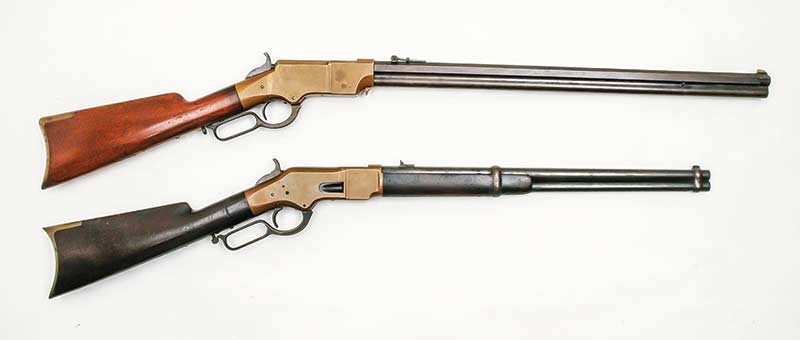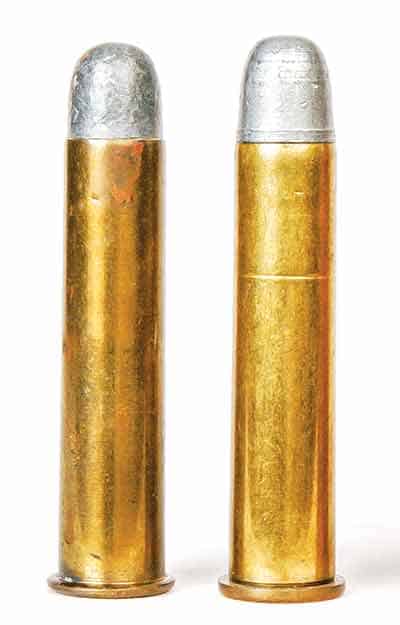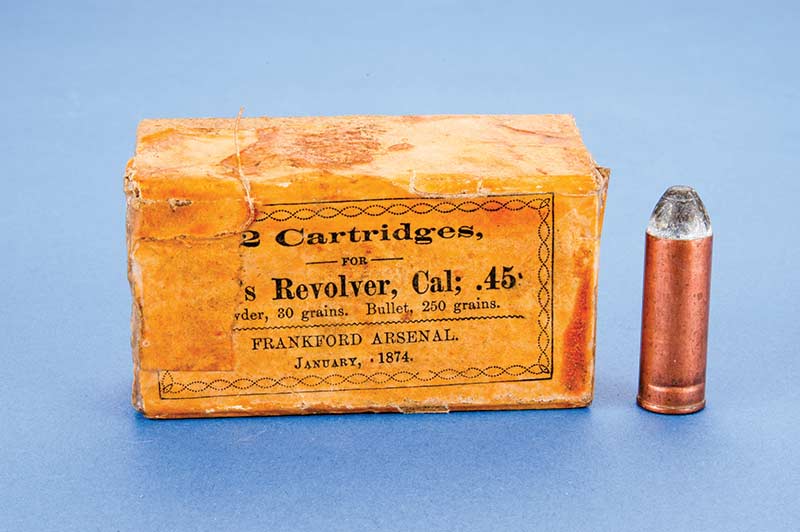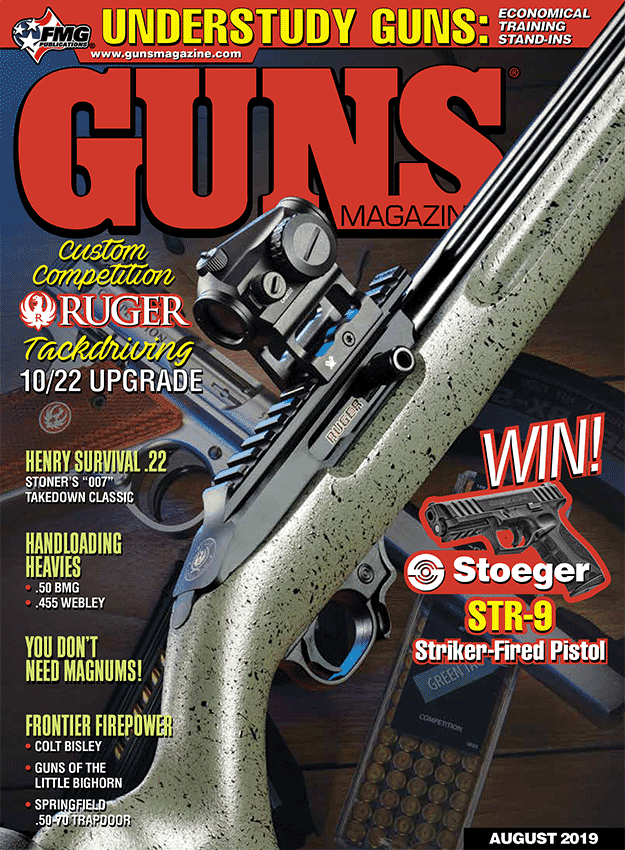Last Stand Loads
Little Bighorn ammo redo
I’m a lifelong student of the “Custer Battle,” otherwise known as the June 1876 Battle of the Little Bighorn. There, the U.S. 7th Regiment of Cavalry and a multitude of Sioux and Cheyenne warriors fought to the death. Perhaps it’s inevitable I would try duplicating the performance of guns known to have been involved.
Cavalry Battery
How would you go about experiencing what it was like to shoot .45 Government (.45-70) Model 1873 “Trapdoor” carbines and .45 Colt SAA revolvers, such as the troopers carried? For cavalry service, the carbine charge was 55 grains of black powder with 405-gr. lead RN bullets. The charge for the Colt revolvers was 30 grains of powder behind 250-gr. conical bullets with a small flat nose.
Nowadays black powder charges using Swiss or Goex 1-1/2 Fg or FFg black powder easily fit in modern .45-70 and .45 Colt brass. Moreover, any RNFP 250-gr. bullet design from molds made by Lyman, RCBS, LEE or Redding/SAECO approximate the profile and weight of the swaged lead alloy .45 Colt Government bullet. Lyman’s cast bullet #457124 was actually designed in the late 1800s specifically to duplicate the 405-gr. swaged lead alloy Government carbine bullet.
Velocities of the Government loads at the time were rated at 1,150 fps from a 22″ carbine barrel and about 850 fps from a 7-1/2″ SAA barrel. Those figures may sound deceptively puny to modern shooters.
One day a few years back I helped a movie company with live firing using my original Model 1873 Trapdoor. While filming I touched off about 70 rounds from the 7-lb. carbine and that night I had trouble sleeping because my shoulder was bruised from recoil. Thirty grains of black powder behind a 250-gr. bullet in a 2-1/2 lb. Colt SAA will cause the muzzle to flip skyward in recoil. Both carbine and revolver put out huge clouds of smoke.
Native American Guns
On the Sioux and Cheyenne side of the Little Bighorn fracas the majority of warriors armed with firearms used Henrys and Model 1866 Winchesters. Those were chambered for .44 Henry Rimfire and obviously we cannot duplicate it today.
This is close though — in replica .44-40 Henrys and Model 1866s, a 30-gr. charge of FFg black powder of either brand under RCBS bullet #44-200FN perfectly matches .44 Henry black powder ballistics around 1,100 fps.
Modern archaeology has proven no fewer than eight Model 1873 Winchester .44 WCFs (.44-40) were at the Little Bighorn in 1876. The load’s ballistics can be duplicated, although it’s impossible to get a full 40-gr. black powder charge in modern brass.
However, 1870s .44 WCF ballistics can be achieved by using 35 grains of FFFg Swiss black powder. Lyman’s mold #427098 was developed in the late 1800s specifically for black powder loads in the .44 WCF. Winchester rated their then-new .44’s velocity at about 1,300 fps. The modern load will hit 1,250 to 1,300 fps, depending on the exact rifle barrel length.
The “Big .50”
There was a hodgepodge of other firearms used on the Sioux/Cheyenne side of the battle. Spencer lever guns probably saw action, but they were rimfire so we’ll wind up with a cartridge both sides were known to use in the fight — the .50 Government, also known as the .50-70.
Several dozen .50-70 Sharps carbines were fired by the hostile Indians at the Little Bighorn while “Trapdoor” .50s were handed out to some of the auxiliary Indian scouts working with the 7th Cavalry. Custer himself took his Remington No. 1 .50-70 Rolling Block rifle into the battle.
Standard load for the .50 Government was a 450-gr. conical bullet over 70 grains of black powder. From the long barrels of Models 1866, 1868 and 1870 Springfields, velocity was rated at 1,250 fps.
Today, 70 grains of Swiss or Goex Fg or FFg black powder will fit in Starline .50-70 brass. Lyman’s #515141 bullet was designed specifically to duplicate the government’s bullet. From my original Model 1868 “Trapdoor” the load gives 1,250 fps — give or take a dozen fps.
Accuracy Potential
How well will all these modern black powder handloads shoot in the original or replica firearms? If the ammunition is prepared correctly (and the shooter can deal with those open sights), I’d say you can expect groups from rifles and carbines in the 2 to 4″ range at 100 yards. The Colt SAA revolver will put 10 shots in about 3″ at 25 yards.
But — and this is a critical “but” — such accuracy will only last until blackpowder fouling builds up. On an extremely dry 90-degree-plus day as it was on June 25, 1876, fouling could have ruined accuracy in as few as 10 rounds. In such a chaotic, dust and smoke-filled battle, pinpoint shooting was likely not done anyway.









